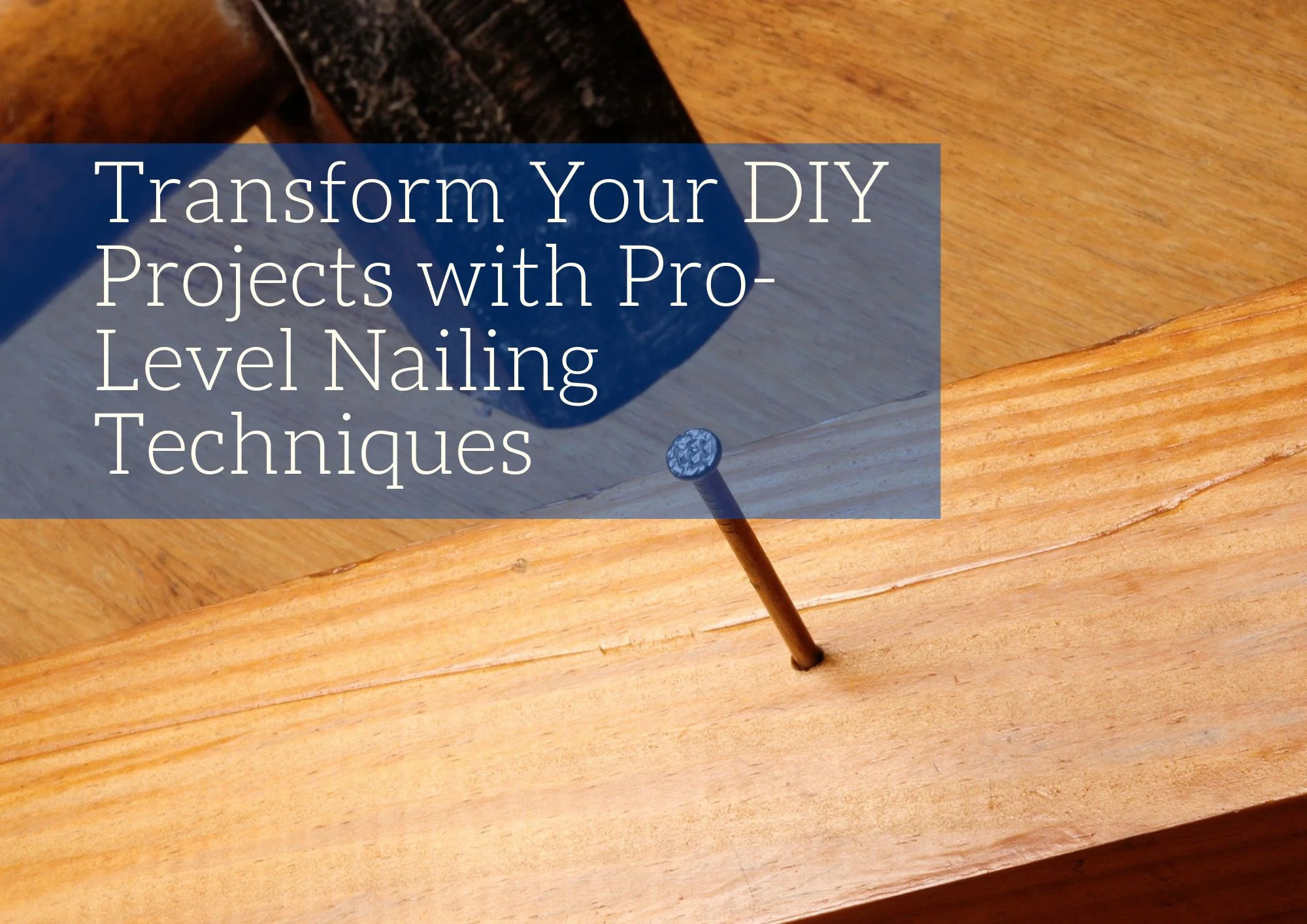Understand the Basic Types of Nails
Before diving into nailing techniques, it’s essential to familiarize yourself with the array of nails available. Here are some common nail types to consider for your DIY projects:
- Finishing nails
- Common nails
- Box nails
- Casing nails
- Masonry nails
Choose the Right Hammer
Selecting the right hammer is crucial for precise nailing. Some popular choices include:
- Claw hammer
- Framing hammer
- Ball-peen hammer
For most DIY projects, a claw hammer is the go-to option.
Nailing with Precision and Control
Key Benefits of Learning Pro-Level Nailing Techniques
- Achieve a polished finish on your DIY projects
- Build sturdy and durable structures
- Save money by doing home repairs and renovations yourself
- Enhance your woodworking and carpentry skills
Nailing Techniques
1. Face-Nailing
One of the most versatile techniques in woodworking is face-nailing. This method involves driving a nail straight into the surface of a workpiece through the face of one piece of wood into another. While it may not be the strongest joint, particularly when perpendicular workpieces are involved, it is incredibly easy and fast to do. Its versatility makes it a go-to method for a variety of situations. Mastering the technique only requires a bit of practice, making it an accessible option for beginner woodworkers.
2. Toe-Nailing
This method involves hammering in a nail at a diagonal angle to secure two pieces of wood together. While it may seem simple, toe-nailing requires precision and careful approach to ensure a strong and secure connection. It’s important to make sure the nails are placed at the correct angle and driven in deeply enough to provide adequate support. Toe-nailing is often used to secure baseboards, studs, rafters, and other structural framing elements.
3. Dovetail Nailing
When it comes to woodworking, the dovetail joint is a classic and timeless technique. But what about ensuring that the joint is reinforced without compromising its clean appearance? This is where dovetail nailing comes in. Using this technique involves delicately driving nails into the wooden material at an angle that runs parallel to the dovetail joint. The result is a discreet reinforcement that complements the joint’s geometric structure and maintains the aesthetic appeal of the final product. If you’re a woodworking enthusiast, mastering this technique is a must for creating durable and beautiful furniture pieces. This type of nailing is more secure than face nailing or toenailing, as it helps to prevent the joint from pulling apart.
4. Blind Nailing
Blind nailing is a technique that is used in a variety of construction and woodworking projects where a clean, seamless look is preferred. Commonly used in molding or flooring installation, blind nailing involves driving a nail through the material at a steep angle so that it remains hidden to the naked eye. This technique is preferred when the presence of visible nails would detract from the overall appearance of the finished product.
5. Clinch Nailing
Clinch nailing is a technique used to join two pieces of wood together by driving a nail through both pieces and then bending the tip of the nail over so that it is flush with the wood. This creates a strong and secure joint that is also relatively invisible.
Clinch nailing is often used in woodworking projects where the appearance of the finished surface is important, such as when making furniture or cabinets. It is also a good choice for joining pieces of wood that will be exposed to the elements, such as in boatbuilding or roofing.












